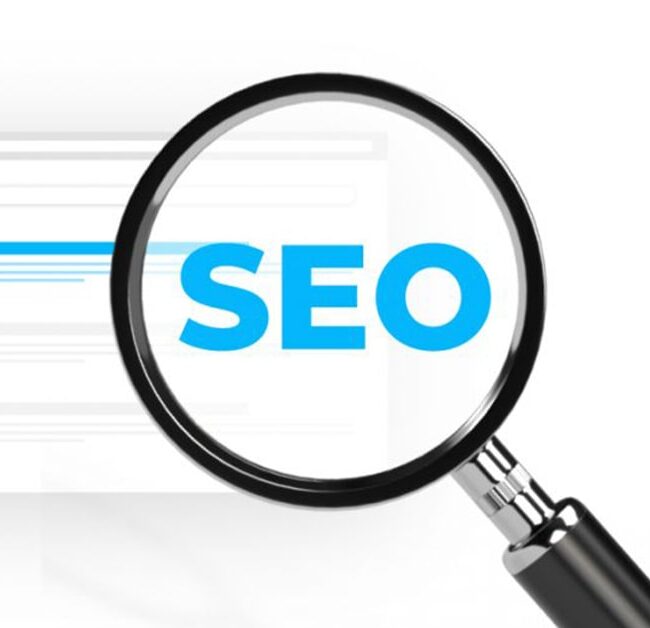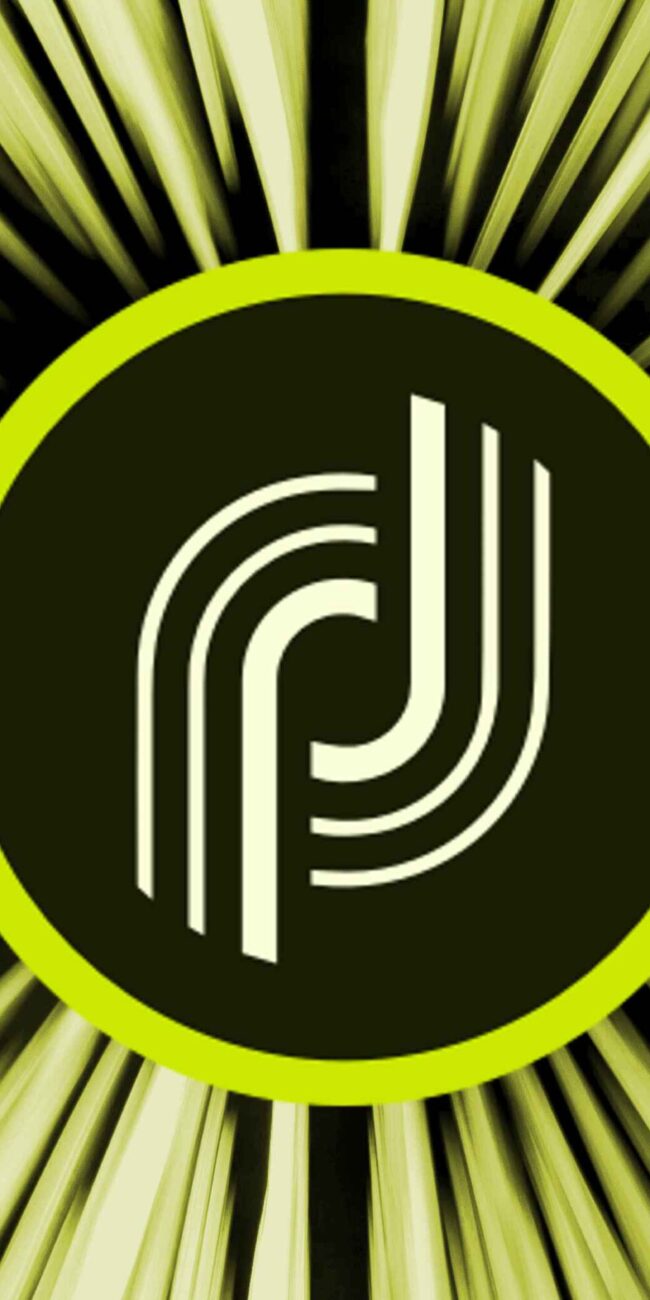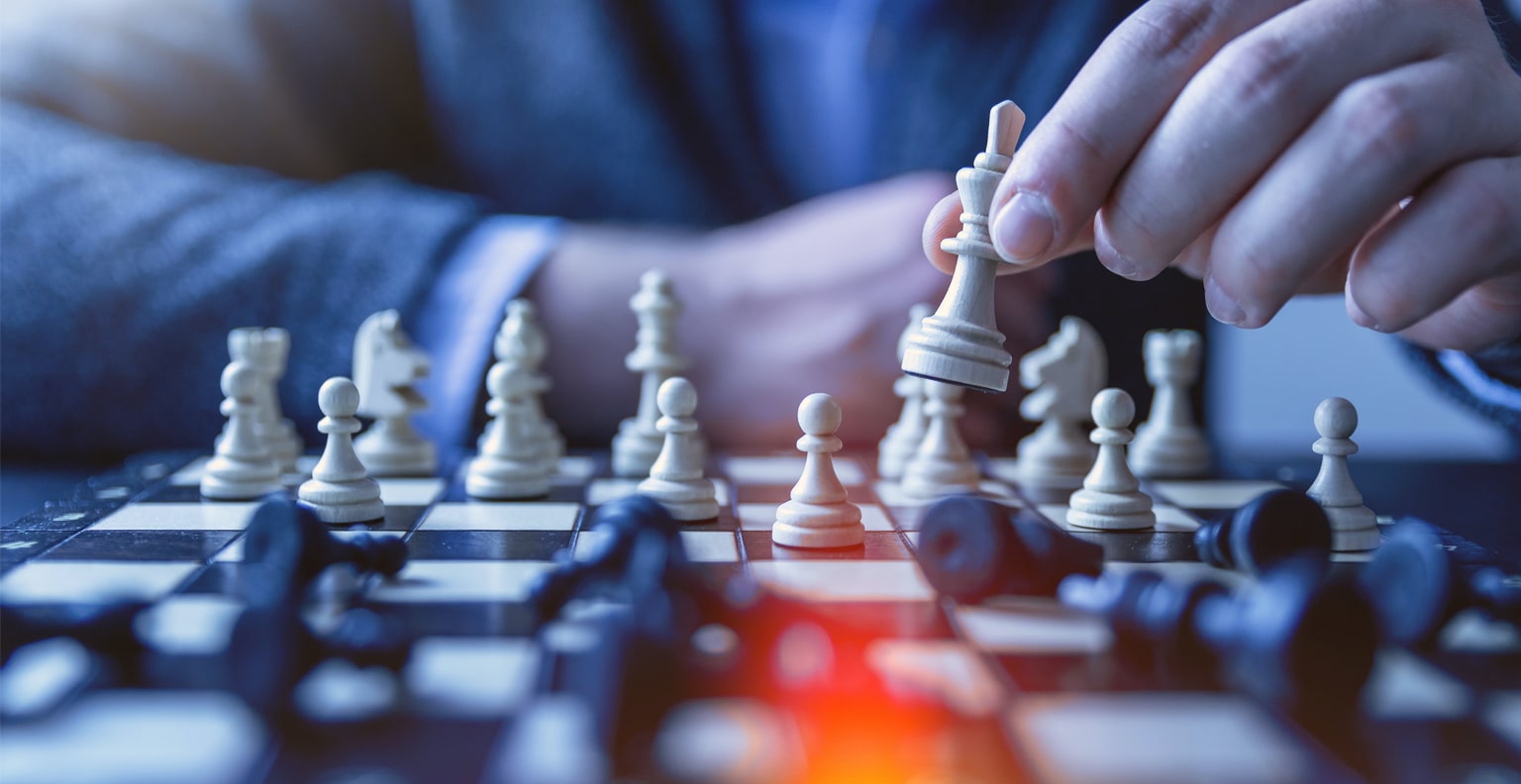
B2B Marketing Strategy 2020: Your Step By Step Guide
About 90% of the world’s data has been produced in the last two years, launching us into what Deloitte has dubbed the Fourth Industrial Revolution. Technology has changed the way we think, learn, act, and shop—and the B2B sector is included. However, when it comes to B2B marketing, many B2B business owners I know have (on some level) made the same mistake—treating their sales and marketing strategies like it’s still 1999.
Creating a plan before you’ve prepared is similar to bungee jumping before you measured the rope. If you haven’t gathered insights about your audience, don’t have a marketing framework to operate within, or don’t understand the three crucual elements of a sales-driving plan, you won’t see success with your 2020 B2B markeing plan. The section below will help you prepare yourself and gather all the research and information you’ll need to create a winning plan.
If you’re in that same boat, allow me to catch you up: Y2K never happened, Beanie Babies were a lousy investment, and B2B buyers now have instant, unlimited access to information via a tiny, internet-connected screen that fits in their pocket.
A new study from marketing research firm Gartner found that despite the proliferation of digital access, 77% of B2B buyers still feel that making a purchase is time-consuming—and even painful.
Let’s change that.
After years on the front lines of the B2B digital marketing transformation, I’ve learned what it takes to succeed and what leads to failure—and I want to share that insider tribal knowledge with you. Below, I’ve condensed everything you need to know about creating a winning B2B marketing strategy into this easy-to-understand guide. It’s broken down into three steps and eight sections (you can jump to each section by clicking below):
Step 1: Prepare
- The modern B2B buyer’s journey
- B2B marketing framework to guide your strategy
- Crucial elements of a sales-driving B2B marketing plan
Step 2: Plan
- Start with your website
- Demand generation strategies
- Lead generation strategies
- Retention and recovery strategies
Step 3: Execute
- Executing your B2B marketing plan
By the end of this guide, you should have a solid understanding of today’s B2B landscape, the trends and behaviors to capitalize on, and strategies the pros use to increase leads, sales, and revenue.
STEP 1: PREPARE
Creating a plan before you’ve prepared is similar to bungee jumping before you measured the rope. If you haven’t gathered insights about your audience, don’t have a marketing framework to operate within, or don’t understand the three crucual elements of a sales-driving plan, you won’t see success with your 2020 B2B markeing plan. The section below will help you prepare yourself and gather all the research and information you’ll need to create a winning plan.
1. Understanding the B2B Digital Transformation and the Modern B2B Buyer Journey
The majority of B2B business owners I speak with understand—at some fundamental level—that the digital transformation changed business as usual. And that includes the way buyers look for and find B2B vendors.
Traditionally in B2B sales, there was one primary buyer. They followed a predictable, controlled path like the traditional marketing funnel template below:
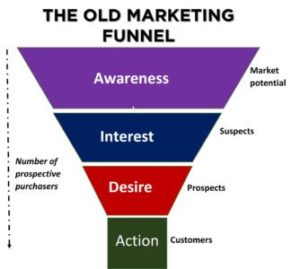
The typical marketing lineup included salesy, printed marketing collateral. Sales reps went to trade shows, made cold calls, and conducted business face-to-face.
Those tactics aren’t as effective as they used to be, for four key reasons:
- Half of all B2B buyers are now millennials, and millennials hate cold calls.
- More people are involved in B2B purchase decisions. The typical buying group is comprised of six to 10 members, and while 64% of C-suite executives have final signoff, 81% of non-C-suiters also have a say.
- The modern B2B buyer does their own research, frequently online. The average B2B buyer now makes an average of 12 online searches before interacting with a vendor’s website, and they are already 57% of the way through the buying process before they want to speak with a sales representative. Even in industrial and manufacturing industries, 67% of purchases are influenced by digital.
- 90% of B2B buyers now twist and turn through the sales funnel, looping back and repeating at least one or more task in the buyer’s journey
In a nutshell, the new B2B buyer’s journey is now a looping, multi-person online journey full of twists and turns as they flip back and forth through the research and discovery stages:
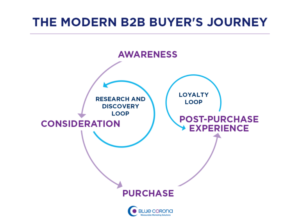
The phases are similar to the old framework, and work like this:
- Awareness
- Multi-participant consideration, along with the research and discovery loop
- Purchase
- Post-purchase experience and the loyalty loop
The new B2B buyer behaves like a B2C consumer, and they expect the same purchase experience and level of service. Nowadays, 80% of B2B buying decisions are based on a buyer’s direct or indirect customer experience, and only 20% is based on the price or the actual offering.
What this means is you need to create a journey-based digital experience that guides your target audience through the stages of the buyer’s journey, and keeps them as raving fans and lifelong customers.
“It is about stepping out of the traditional B2B mindset and seeing your customers as people who live within the digital space as ‘consumers’ as well. That will open up more ideas and doors for creativity and new practices” – Daniel David, Manager, Digital Corporate Communications at Fuji Xerox.
The Best Marketing Framework to Guide Your B2B Strategy
I wrote an article similar to this about the B2C buyer’s journey, and I stand by the framework I used to drive that article—as I said above, the B2B buyer’s journey is now the same as a B2C buyer’s journey, it just involves more people.
The framework is Avinash Kaushik’s See-Think-Do-Care model.
The See-Think-Do-Care model is based on consumer intent and divides each stage into audience clusters:
- See: Largest addressable qualified audience with no commercial intent
- Think: Largest addressable qualified audience with some commercial intent
- Do: Largest addressable qualified audience with loads of commercial intent
- Care: Current customers with two or more business transactions
Crucial Elements of a Sales-Driving B2B Marketing Plan: Demand Generation, Lead Generation, and Retention Strategy
There are six jobs, or tasks, that all B2B customers must complete throughout any B2B purchase:
-
- Problem identification
- Solution exploration
- Requirements building
- Supplier selection
- Validation
- Consensus creation
To create a customer experience that solves for each task and guides your target audience through the buyer’s stages, your B2B marketing plan should have three components:
- Demand generation – top-of-the-funnel marketing strategies that create an awareness of and interest in your product or service. Demand generation solves for the first three tasks B2B buyers need to perform: Problem identification, solution exploration, and requirements building.
- Lead generation – middle- and bottom-of-the-funnel marketing strategies that convert interest into action. Lead generation tactics solve for the last three tasks buyers need to perform: Supplier selection, validation, and consensus creation.
- Retention and recovery – loyalty loop marketing strategies that turn one-time customers into repeat customers. Retention and recovery bring customers back to the beginning of the journey with new problem identification and solution exploration.
To accomplish these three components, you’ll need to use these top 10 B2B marketing strategies:
- A few of these channels and strategies work for more than one stage in the buyer’s cycle, depending on how you apply them, and are therefore listed more than once below.
- A great website
- Social media marketing
- Video marketing
- Content marketing
- Search engine optimization (SEO)
- Pay per click advertising (PPC)
- Event marketing
- Affiliates and partnerships
- Remarketing
- Marketing automation (including email marketing)
A few of these channels and strategies work for more than one stage in the buyer’s cycle, depending on how you apply them, and are therefore listed more than once below.
STEP 2: PLAN
Now that you understand your marketing landscape, have a framework to operate within, and know the crucial elements you need for your marketing strategy to work, it’s time to start planning. To plan correctly, you need to understand which marketing channels are most effective for lead generation, demand generation, and retention. The section below walks you through the best marketing strategies for each phase.
The Best Marketing Strategy for Any Stage of the Sales Funnel: A Professional B2B Website
Your website is arguably your most valuable marketing asset, period. If you don’t have a professional website design, get one. Now. Bookmark this article and contact someone.
It gets its own section because it plays such a massive role in every single stage of the buyer’s journey. Half of all B2B customers today expect a supplier’s website to be a helpful channel, and more than a third expect the site to be their most effective channel. That number will get bigger as more Baby Boomers leave the workforce, and more millennials (and soon, Gen-Z) take on buyer roles.
On top of being stocked with great content (more on content marketing further down), your website needs to be five things if you want it to generate B2B leads and sales:
- Fast – 40% of users will abandon a webpage if it takes longer than three seconds to load.
- Secure – 85% of consumers won’t browse an unsecured site. Make your website HTTPs instead of HTTP by purchasing an SSL certificate.
- Mobile-friendly – over 60% of online traffic comes from a mobile device. Not only that, but 80% of B2B buyers use a mobile device at work, and more than 90% of buyers say they’re likely to buy again from a vendor that had a superior mobile experience, compared to 50% of those who report a poor experience. Not enough? Mobile drives or influences an average of more than 40% of revenue in leading B2B organizations, and 50% of B2B search queries today are made on smartphones (and this percentage will grow to 70% in 2020).
- Actionable – Your website is not a brochure; it’s a 24-hour sales rep. Approximately 44% of B2B marketers say the main reason they abandon websites is that there’s no contact info immediately visible. Your website needs clear calls to action, engaging contact forms, and authority builders like testimonials, awards, and affiliations.
- Professionally designed – 37% of buyers will leave a website because of poor design or navigation, and 46% will leave a website because of a lack of message (it’s not clear what the company does). Not only that, but a single bad experience on a website makes users 88% less likely to revisit a site.
B2B Marketing Strategies for Demand Generation
There are dozens (or hundreds, or thousands) of companies that need your services or products. You know that. I know that. The companies themselves? Not so much. They may not even realize they have a problem. That’s where demand generation comes in.
In a nutshell, B2B demand generation marketing makes companies and buyers aware of a problem they have, aware that a solution exists and that you have it, and interested in learning more about your product or service. These are the digital strategies that work best for demand generation:
- Display advertising
- Content marketing
- Video marketing
- Social media marketing (and advertising)
- Search engine optimization (SEO)
B2B Marketing Strategies for Lead Generation
Once buyers are aware of your product or service, you can nudge them into the “think” and “do” stages. Below you’ll find the top marketing strategies for B2B lead generation:
- PPC search ads
- Remarketing
- Events
- Affiliates, testimonials, partnerships
- Content marketing
- SEO
B2B Marketing Strategies for Customer Retention and Recovery
Great, you’ve got a new client!
Now, how are you going to keep them? An important part of the B2B buyer’s journey is the loyalty loop—according to Marketing Metrics, it’s more than 350% more profitable to sell to an existing customer than to a new one. The goal is to make your buyers start the process all over again with a new product or additional service, or even better, become a brand advocate for you.
The strategies below are the best ways to accomplish customer retention and recovery.
CONTENT MARKETING
Content marketing is one of the best ways to keep current clients interested. Not only does it keep your company top-of-mind, but it also empowers your buyers to make better decisions with your service or products. There are five types of content marketing that work for client retention and recovery:
- Blogs – Every morning, I read up on my favorite marketing and MarTech blogs to see what’s new. The better the blogs, the more skills and knowledge I gain, the more I respect the vendor, and the more likely I am to use them again.
- E-books and whitepapers – Now that you’ve got a customer, empower them by giving them educational material in the form of whitepapers and e-books.
- Social media – Regularly post your blogs, webinars, new products, and client testimonials to your social media profiles. You never know when they’ll see something that sparks their interest.
- Videos – Video marketing is great for customer retention and recovery, and it can be a pretty innovative B2B marketing strategy if you go with 360-degree and interactive videos. Create video versions of your blogs, explainer videos, and short ads for different products and services.
- Webinars – Help customers use your product or take advantage of your service more effectively with educational webinars, interviews, and Q&As.
MARKETING AUTOMATION (INCLUDING EMAIL MARKETING)
By now, email is a pretty traditional B2B marketing strategy—an oldie but a goodie. It’s a great way to stay top-of-mind and help your existing customer base stay aware of new products, insights, and deals/savings from your company.
The marketers doing it right see (on average) a 760% increase in revenue from segmented, customized marketing campaigns.
Some examples of good email marketing for the bottom of the funnel include:
- Monthly newsletters
- Blog newsletters
- Webinar notifications
- New service offering notifications
- Thank-you and culture-building emails
- Webinar announcements and reminders
- New e-book announcements
- Staff introduction emails
STEP 3: EXECUTE
After creating plans for demand generation, lead generation, and retention and recovery, you’re ready to execute. Executing your B2B marketing plan correctly is crucial—one misstep can throw off your whole cadence and customer experiences. The section below will walk you through the process of properly executing your digital marketing plan.
Executing Your B2B Marketing Plan in 2020: Five Steps
Now you know the best B2B marketing strategies and channels for each stage of the buyer’s funnel.
That’s worth exactly squat unless you know how to execute these strategies.

